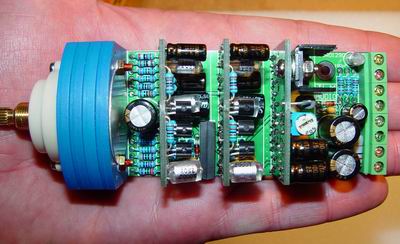[quote author="Kev"]
(even though a simple 1272 on a new PCB was in the works) [/quote]
sssshhhhhhhhhhhhh!
All I know is what I've swallowed whole in the last 48 hours or so. Never really looked at Neve before, busy with 400V dc. It's fascinating gear, even just a single channel amp. What might not hit people right away is this stuff sounded good pushing signal through HUGE boards to a multitrack and then back again to a stereo master. It's not too hard to amplify one feed signal to recording medium but when there's big huge gobs of lots of signal things tend to turn into toothpaste by the time it gets to the radio. So while these little bits are ingenious in themselves Neve's genius, & API et al, was to get clean signal with out noise & distortion stacking up on itself, and still manage to master 24 or more tracks to two, with all the tape hiss stacking up on itself, & actually make a saleable album (artistry notwithstanding.) Then push the master through a Neumann lathe, press the lp's and start all over again in somebody's livingroom, with this tiny tiny tiny signal at a turntable stylus. Or magnetized waves on the sound track of 35mm motion picture film. Or picking radio waves out of the air. Not to mention television. If we're not quite as busy entertaining ourselves in 200 years or so I wonder what folks will think about this enormous effort we've made to reproduce sound and vision, dontchya?
Anyway, 1073 it is for me, maybe I can get TK to cut loose his secret on adding an HF rolloff switch. Y'know Kev you mention in Project 1 that you didn't think the 1073 was the thing for our digital age, but I don't think you ever got around to explaining why. ???? Why, amigo, why?






![Soldering Iron Kit, 120W LED Digital Advanced Solder Iron Soldering Gun kit, 110V Welding Tools, Smart Temperature Control [356℉-932℉], Extra 5pcs Tips, Auto Sleep, Temp Calibration, Orange](https://m.media-amazon.com/images/I/51sFKu9SdeL._SL500_.jpg)




























